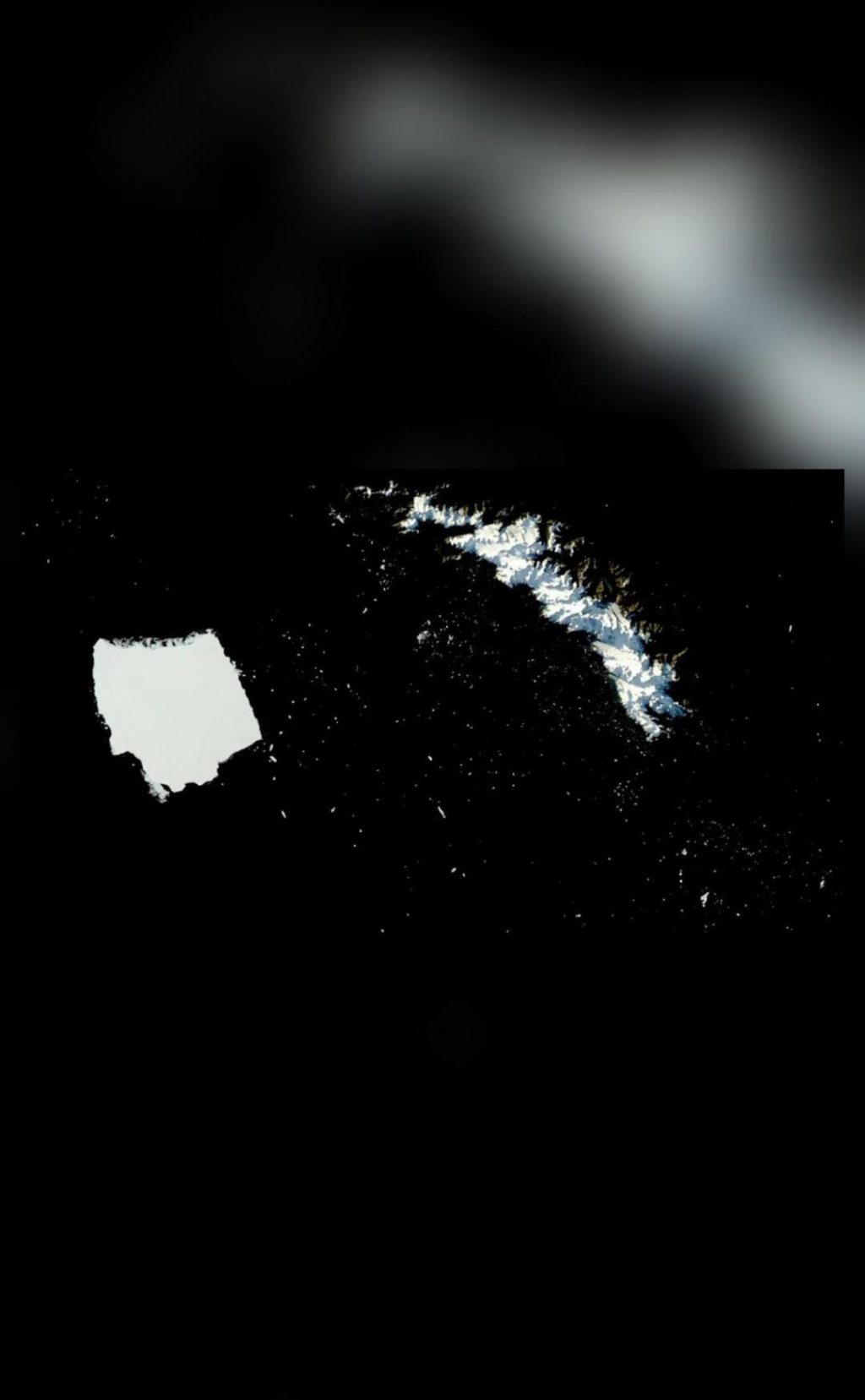
Pic from space shows world’s largest iceberg breaks into thousands of pieces
In a dramatic and unprecedented event, the world’s largest iceberg, A23a, has broken into thousands of smaller pieces, as captured in a recent photo by NASA’s Aqua satellite. The massive iceberg, which was previously floating in the Southern Ocean, has undergone a process known as “edge wasting,” resulting in a significant reduction in its size.
According to NASA, A23a has lost around 520 square kilometers of its surface area since March, with thousands of smaller iceberg pieces littering the ocean surface near the main berg. The stunning image, released by NASA’s Earth Observatory, shows the dark, starry night-like scene, with the smaller icebergs scattered across the water like tiny stars.
Edge wasting is a natural process that occurs when icebergs are exposed to sea water and wind, causing the edges to melt and break off. This process is accelerated by the warmer waters of the Southern Ocean, which can cause the ice to melt at a faster rate. In the case of A23a, the edge wasting has resulted in a significant loss of mass, with the iceberg shrinking by a substantial amount.
The breaking of A23a is a significant event, not only due to its massive size but also because of the potential implications for global sea levels. Icebergs like A23a are formed when large chunks of ice break off from glaciers or ice shelves and float away in the ocean. As they melt, they contribute to sea level rise, which can have devastating effects on coastal communities and ecosystems.
A23a is the largest iceberg to break off from Antarctica since 2000, and its disintegration is a sobering reminder of the impact of climate change on our planet. As the global temperature continues to rise, scientists are concerned about the potential for more massive icebergs to break off from Antarctica and contribute to sea level rise.
The breaking of A23a is also a significant event for scientists, who use icebergs like these to study the Earth’s climate and ocean circulation patterns. Icebergs like A23a are like “natural laboratories” for scientists, providing valuable insights into the Earth’s systems and processes.
In conclusion, the breaking of A23a is a significant event that highlights the importance of monitoring and studying icebergs like these. As the global temperature continues to rise, it is essential that we continue to study and learn from these icebergs, in order to better understand the impact of climate change on our planet.
Source: https://earthobservatory.nasa.gov/images/154262/antarctic-iceberg-loses-its-edge






